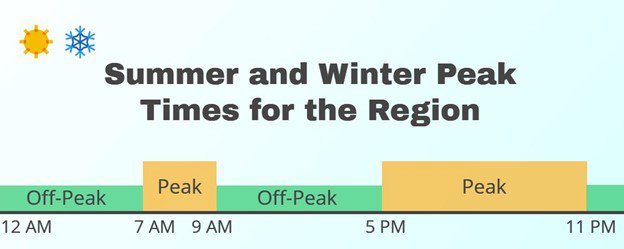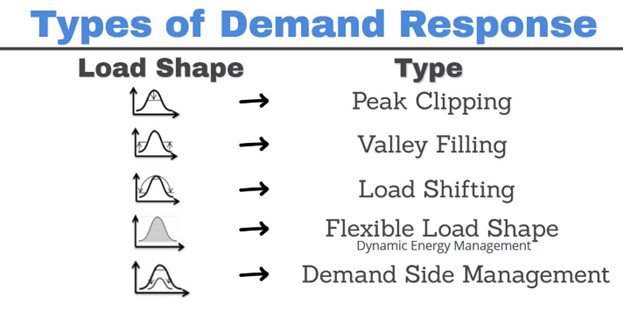Demand response is the voluntary and temporary reduction in consumers’ use of electricity when the power system is stressed (full definition below). The 2021 Power Plan found that low-cost and frequently deployed demand response can offset needs during peaking and ramping periods and reduce power system emissions. Our assessment shows about 520 megawatts of demand voltage regulation and 200 megawatts from time of use programs could be available by 2027. Both of these products could meet the needs found in the plan.
A time of use (may be called time of day) program is illustrated below and represents the peak times seen for the region where it would be advantageous to reduce load, where, during off-peak times, load could likely be increased without negative system impacts. As such, a time of use program would have higher rates during the peak periods and lower rates during off-peak periods.

There are different ways demand response or broader demand-side management programs may alter the load profile depending on the needs of the system:

The 2021 Power Plan recommends utilities consider the value of adequacy, capacity, and emissions reduction when evaluation demand response in integrated resource plans and other analyses. Since both demand response and energy efficiency depend on customer engagement, an integrated demand-side management program could be a productive way to capture the potential. More information on how demand response was modeled in the 2021 Power Plan can be found in the Plan’s supporting materials.
Full "demand response" definition:
Demand response is a non-persistent intentional change in net electricity usage by end-use customers from normal consumptive patterns in response to a request on behalf of, or by, a power and/or distribution/transmission system operator. This change is driven by an agreement, potentially financial, or tariff between two or more participating parties. (Updated 2017)


